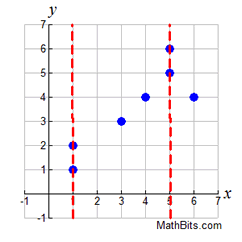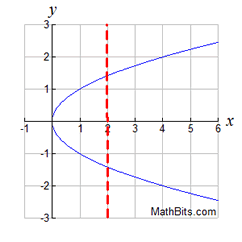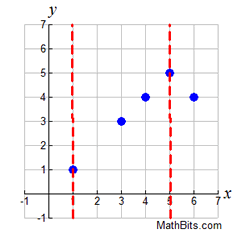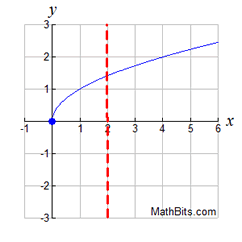Can the Y Values Repeat in a Function
|
Any gear up of ordered pairs may be used in a relation.
If y'all add a "specific rule" to a relation, yous get a office.
Allow'south arrange our previous examples then they fit the function "definition".
Given that relation A = {(iv,3), (k,5), (7,-iii), (three,2)}. Which of the following values for k will brand relation A a function?a) three b) four c) six Solution: Choice c. The 10-values of iii and 4 are already used in relation A. If they are used once again (with a different y-value), relation A will not be a function. Which of the following graphs represents a function? Solution: Choice b. A vertical line drawn on this graph will intersect the graph in but one location, making information technology a part. Vertical lines on the other three graphs will intersect the graph in more than 1 location, or as in part a, will intersect in an infinite number of points (all points).
When you desire to graph lines, you 1. solve the equation for "y =", produce a chart of points (a T-nautical chart), and plot, or By solving for "y =", you are actually identifying a "function". If you can solve an equation for "y =", then the equation is a "part". Most calculators (including the TI-84+ serial) tin only handle graphing functions. BUT ... what most y two = 10 ? NOTE: The re-posting of materials (in role or whole) from this site to the Internet is copyright violation |
Source: https://mathbitsnotebook.com/Algebra1/Functions/FNFuncBasics.html







0 Response to "Can the Y Values Repeat in a Function"
Post a Comment